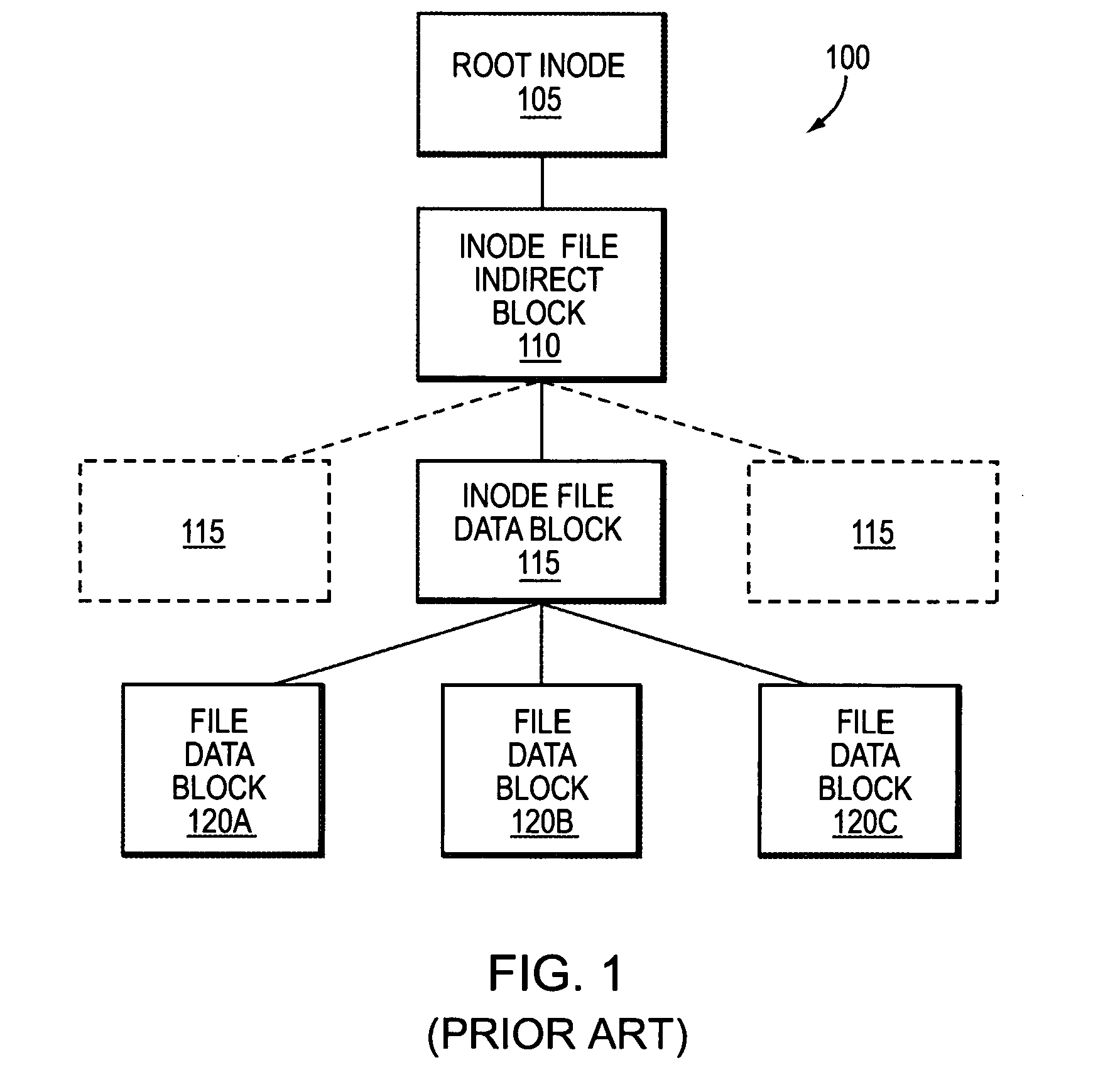System and method for supporting asynchronous data replication with very short update intervals
a technology of asynchronous data replication and update interval, applied in the field of file systems, can solve the problems of affecting the efficiency of file system recopying, so as to reduce the number of changes transmitted and improve the efficiency of recopying. the effect of updating blocks
- Summary
- Abstract
- Description
- Claims
- Application Information
AI Technical Summary
Benefits of technology
Problems solved by technology
Method used
Image
Examples
Embodiment Construction
[0040] A Network and File Server Environment
[0041] By way of further background, FIG. 6 is a schematic block diagram of a storage system environment 600 that includes a pair of interconnected computers (file servers in this example) including a source system 610 and a destination system 612 that may be advantageously used with the present invention. For the purposes of this description, the source system 610 is a networked file server that manages storage one or more storage disks 662 on a source volume 614. The source system 610 executes an operating system 700. The operating system 700 implements a file system or other (for example, block-based) data structure on the disks 662 connected to the source system 610.
[0042] The destination system 612 manages one or more destination volumes 616, comprising arrays of disks 660. The source and destination are linked via a network 618 that can comprise a local or wide area network, such as the well-known Internet. An appropriate network a...
PUM
 Login to View More
Login to View More Abstract
Description
Claims
Application Information
 Login to View More
Login to View More - R&D
- Intellectual Property
- Life Sciences
- Materials
- Tech Scout
- Unparalleled Data Quality
- Higher Quality Content
- 60% Fewer Hallucinations
Browse by: Latest US Patents, China's latest patents, Technical Efficacy Thesaurus, Application Domain, Technology Topic, Popular Technical Reports.
© 2025 PatSnap. All rights reserved.Legal|Privacy policy|Modern Slavery Act Transparency Statement|Sitemap|About US| Contact US: help@patsnap.com



